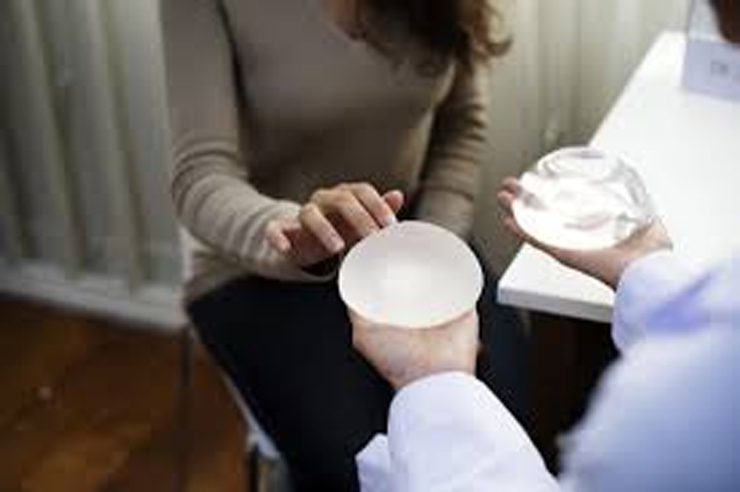
Meghan Trainor has always been open about her life and personal experiences, and recently, she took to her Workin' on Upgrades podcast to share her decision to undergo breast augmentation surgery. The popular singer, known for hits like "All About That Bass," opened up about the physical changes her body has gone through post-pregnancy and how she feels about her appearance now.
Table of Content:-
In this candid discussion, Trainor expressed her excitement about the upcoming procedure and explained why she believes this step will boost her confidence both personally and professionally. While Trainor’s announcement has sparked conversations about body image and cosmetic procedures, it’s important to consider several factors before deciding to undergo a breast augmentation.
Meghan Trainor’s Reason for Breast Augmentation
Meghan Trainor, a mother of two young boys, Riley and Barry, has experienced significant physical changes due to pregnancy, weight fluctuations, and breastfeeding. On her podcast, she explained that her breasts went from being "full of milk" to "empty," and she now feels like they are "saggy sacks" rather than the breasts she once had. After enduring these physical changes, Trainor made the decision to undergo breast augmentation.
View this post on Instagram
The decision to get breast implants isn’t just about aesthetics for the "Made You Look" singer. Trainor shared that her breasts’ current state had been affecting her ability to wear certain outfits during her recent Timeless Tour. The need for a supportive bra that interfered with her tour wardrobe was one of the major factors that led her to want the procedure. She eagerly anticipated the confidence that a breast augmentation would bring, revealing that while the size of her breasts wouldn’t change, the procedure would greatly enhance her self-esteem.
What to Consider Before Getting Breast Augmentation
While Meghan Trainor’s decision reflects her personal desires, anyone considering breast augmentation should carefully weigh several factors before moving forward with surgery. Below are some important considerations to keep in mind:
Also Read: Paris Hilton Unveils Her Secret To Radiant Skin—No Cosmetic Procedures Involved
Choosing Between Implants and Fat Transfer
When it comes to breast augmentation, there are more options than just saline or silicone implants. One alternative is the use of autologous fat grafting, where fat is extracted from other areas of the body through liposuction and then transferred to the breasts. This procedure has seen a rise in popularity in recent years, offering a more natural option, but it has its limitations. Typically, only up to two cup sizes can be achieved with fat transfer, so it may not be the best option for those looking for a significant increase in breast size.
Selecting the Right Implant Type
For those opting for traditional breast implants, there are numerous factors to consider, such as the type of implant (saline or silicone), shape (round or teardrop), texture (smooth or textured), and profile. The right choice depends on body proportions, skin elasticity, and desired results. Additionally, overly large implants could lead to complications such as premature sagging or back and shoulder pain, so it’s essential to select a size that complements the body naturally.

Implant Placement: Sub-Glandular vs. Sub-Muscular
The placement of breast implants is another crucial decision. There are two primary options: sub-glandular (between the mammary gland and the pectoral muscle) and sub-muscular (underneath the muscle). Each placement has its own benefits and drawbacks. Sub-muscular implants often appear more natural and are less likely to cause complications over time, while sub-glandular implants may offer quicker recovery but can sometimes lead to visible rippling or other issues.
Immediate Results vs. Final Results
After breast augmentation surgery, it’s important to understand that what you see immediately after the procedure isn’t the final result. Swelling and bruising are common, and the implants may take weeks to settle into their final position. During this time, patience is required as the body heals and adjusts. It’s normal to experience discomfort and changes in appearance as part of the healing process.
Lifespan of Breast Implants
Modern breast implants are designed to be durable, but they are not permanent. On average, breast implants last about 10 to 15 years before they need to be replaced. Patients should undergo annual checkups to monitor the condition of the implants. Those with silicone implants, in particular, are advised to have MRI scans starting three years after the procedure, followed by scans every two years to check for leaks, as they can be harder to detect.
Expecting Future Surgeries
Many breast augmentation patients will eventually need further surgeries, whether it’s for implant replacement or a breast lift. As the body ages or undergoes additional changes (such as weight fluctuations or pregnancy), the breast tissue may begin to sag again. These future procedures may be necessary to maintain the desired look, so patients should be prepared for the potential need for ongoing surgical care.
Bottomline: Enhancing Confidence Through Surgery
Meghan Trainor’s openness about her decision to undergo breast augmentation provides insight into how such a personal choice can be driven by both physical and emotional reasons. For her, the procedure is about enhancing her self-esteem and feeling comfortable in her own skin. However, as with any cosmetic surgery, there are several factors to consider before going under the knife.
Patients must consult with an experienced, board-certified plastic surgeon to discuss the procedure that best suits their needs and body type. With proper research and a clear understanding of the process, breast augmentation can be a positive and confidence-boosting experience for those who choose it.
Also watch this video
How we keep this article up to date:
We work with experts and keep a close eye on the latest in health and wellness. Whenever there is a new research or helpful information, we update our articles with accurate and useful advice.
Current Version
